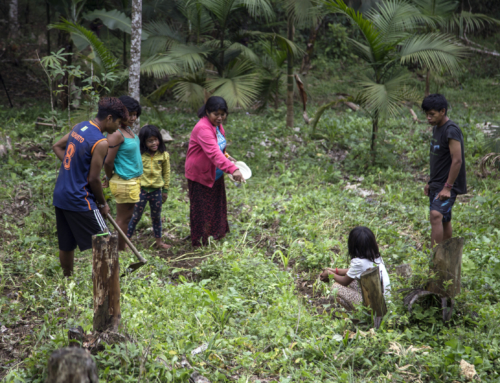As the COVID-19 pandemic has put both our health systems and our relationship with nature in the spotlight, Nina Seale investigates the relationship between health and biodiversity.
Let’s begin with the elephant in the room: diseases that have transferred from animals to humans. Not just COVID-19, but Severe Acute Respiratory Syndrome (SARS), HIV, bird flu (H5N1), Ebola, swine flu, malaria, Lyme disease and rabies are some of the most well-known infections humans have picked up from wildlife (known as zoonotic diseases).
Trade in wildlife for uses such as consumption and medicine are thought by many scientists to be responsible for the emergence of COVID-19 in 2019 (potentially from the Huanan Seafood Wholesale Market in Wuhan, which is thought to have been selling wildlife including snakes, porcupine and deer); SARS in 2002 (thought to have transferred to humans from masked palm civets and/or raccoon dogs which were being sold for consumption in Guangdong’s animal markets); Ebola (consumption of raw bushmeat (infected fruit bats, monkeys, apes, forest antelope or porcupines) in West and Central Africa); and HIV (HIV-1 is thought to have infected chimpanzee hunters for the bushmeat trade and HIV-2 from Sooty mangabey monkeys, which are hunted and kept as pets). Livestock has also been traced as a source in the case of the Middle East Respiratory Syndrome (MERS) coronavirus outbreak in 2012, which transferred to humans handling domesticated camels or possibly from consumption of raw camel products like unheated milk.
Why bats?
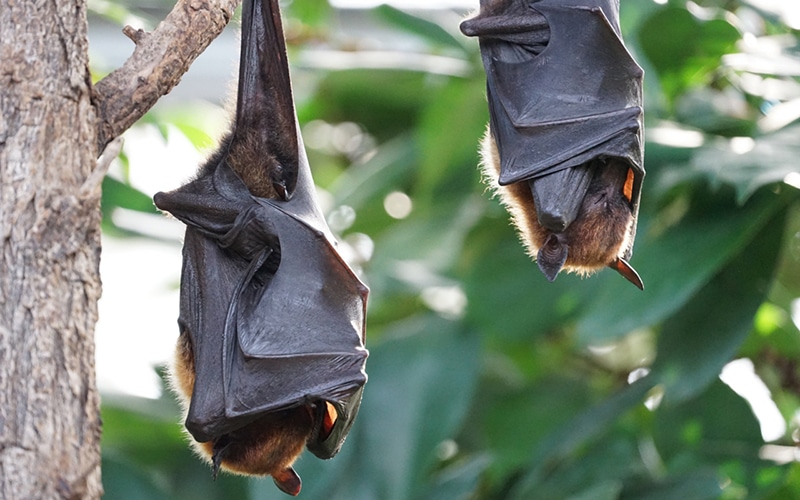
Bats are often ‘reservoir hosts’ for viruses, meaning they serve as a source of infection and potential reinfection of other species and as a means of sustaining a virus when it is not infecting others. Image: DMCA
With the exception of HIV, there is evidence that all of the above viruses originated in bats, and were then passed to intermediary animals (possibly pangolin for COVID-19, civets for SARS, camels for MERS etc.) before they infected humans. Bats are thought to be ripe for the rapid evolution of viruses into highly aggressive strains due to their fierce immune response (which possibly evolved as a result of bat flight, but that’s a fascinating conversation for another time). Viruses adapt to reproduce quickly, which bats can tolerate but these high viral loads then become extremely infectious when bats (or bat droppings) come into contact with other species. Therefore, in a species where the immune response is not nearly as high as a bat’s (like humans), it is extremely aggressive, leading to outbreaks of severe and highly infectious viruses like COVID-19.
There are conservation implications for bats as a result of being reservoir species for viruses. A predictable response is that human populations affected by a disease which originates in bats will call for large-scale culling of wild bat colonies. This happened when Hendra virus emerged in Australian flying fox populations and in Latin America, where vampire bats are culled as an attempt to control rabies. However, instead of dealing with the problem, this approach has been shown to have the opposite effect. For example, a study of the relationship between vampire bat culls and rabies transmission in Peru found that the size of a bat population barely affected rabies transmission. Plus the culling techniques disproportionately killed adult bats, who are less likely to transmit viruses than young bats, and this also caused greater movement between colonies – spreading viruses more widely.
A better response could be mediated using conservation techniques such as community outreach about the importance of bats as pollinators, seed dispersers and pest controllers, therefore the value of protecting them and their habitat, as well as the dangers of bat capture and consumption – and the danger of any supposed bat control techniques that in fact makes these animals move around more, thus increasing the chances of them spreading disease. Habitat conservation is also extremely important; in Central and South America, the conversion of forested habitats into pastures shifted the dominant food source for vampire bats from native vertebrates to livestock. This increased rabies transmission from vampire bats to livestock and domestic animals, and consequently humans.
Conservation solutions
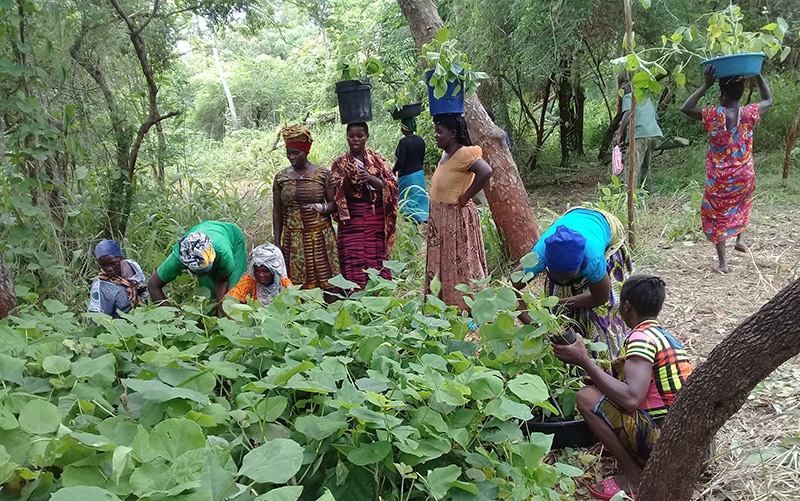
Wildlife conservation encapsulates many different disciplines, from forest restoration (as shown here by the Mpingo Conservation and Development Initiative (MCDI) in Tanzania), creating protected areas, interventions for endangered species, community outreach, lobbying against land use change and much more. Image © International Tree Foundation
The current pandemic has brought conversations with conservationists about disease control into mainstream media. If more than 70% of all emerging diseases affecting people have originated in wildlife and domesticated animals, could conservation provide solutions to preventing future outbreaks?
The short answer is yes. Conservation preserves biodiversity, and biodiversity itself shields us from the spread of diseases through a mechanism called the dilution effect. In a richly diverse ecosystem, intermediary species which are not very infectious (so are less likely to pass on a zoonotic infection such as a coronavirus) are likely to outnumber intermediary species and individuals which are highly infectious, diluting the rate of infection. There are lots of other aspects to this, such as an intact food chain in a healthy, diverse ecosystem where predators will control the numbers of more infectious animals (such as rodents, ticks, etc.).
In addition to the diluting effect of biodiversity, many of the factors which have led to the transmission of zoonotic diseases from wildlife to humans (including COVID-19) are being tackled by conservationists: habitat loss and degradation, industrial agriculture, unsustainable, illegal and/or unregulated wildlife trade, and the vulnerability of communities living alongside wildlife, to name just a few.
Habitat loss and degradation
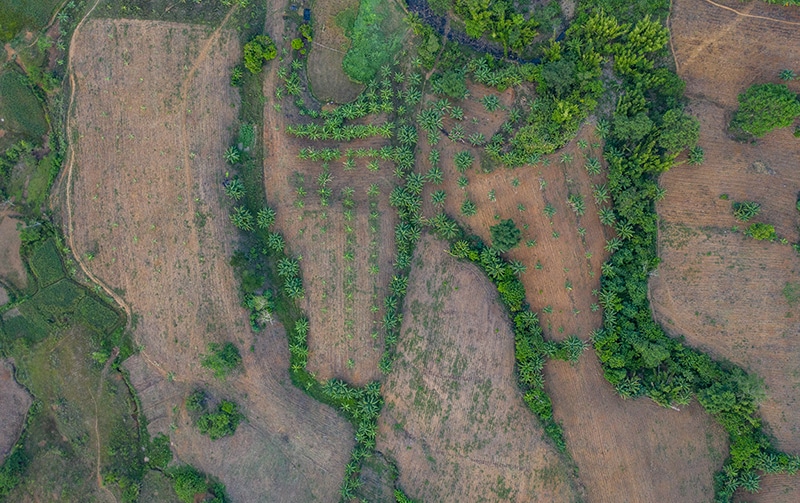
Habitat loss is a key driver of the spread of zoonotic diseases. The more fragmented the habitat, the longer the ‘edge’ where crossover between wildlife and domesticated animals or humans is more likely. Image © Chris Scarffe
Habitat loss and degradation (when a habitat is degraded so far as to lose most of its biodiversity due to human activities such as pollution, development, agriculture, livestock farming, war etc.) causes animals to live in smaller and smaller spaces. This makes it easier for diseases to spread through populations as well as causing them stress, which can compromise their immune systems.
A lack of habitat also means a lack of food, which can cause animals to leave their home ranges to look for alternatives, and when there is a lack of connecting habitat, this often forces them to enter human-inhabited areas. This increases the likelihood of wildlife-human disease transmission, but also wildlife-intermediary-human transmission through domesticated animals such as pets (free-ranging dogs are a well-known intermediary host for zoonotic diseases) and livestock. The conversion of natural habitats to land for human uses also rarely takes into account the ‘edge’ effect – where fragmenting natural habitats into unconnected ‘pieces’ spread across a landscape increases the amount of edges there are which form ‘contact zones’ between humans and wildlife where disease transmission may occur. Another angle to the correlation between habitat loss and increased disease transmission is that the species which are more likely to survive disruption (for example, rats and some bats) are also the ones which are most likely to promote transmission. By losing other species in the ecosystem, natural control systems like predation and competition are lost and these species thrive.
But by conserving habitats and restoring degraded areas, we can reduce this risk. Conservation NGOs, local communities and governments have already implemented habitat protection models such as protected areas, national parks, community conservancies and indigenous-managed conservation areas – they just need to be supported and scaled up. These also have the additional benefits of cleaner air and water, less human-wildlife conflict (especially when protected areas are part of greater connected networks) and recognising and compensating communities and indigenous peoples for their role.
The expansion of industrial agriculture

Industrial agriculture like this Oil palm plantation often replaces the species diversity of a natural habitat with a monoculture (when the landscape is dominated by one species). Image: Glenn Hurowitz
One of the driving causes of habitat loss is the expansion of industrial agriculture, which has severe consequences for disease transmission. This study found that a quarter of all diseases- and half of all zoonotic diseases- that emerged in humans could be traced back to agricultural causes).
The dam, reservoir and irrigation networks created to support industrial agriculture frequently increase local populations of water-borne disease hosts (like mosquitoes for malaria or snails for schistosomiasis). The widespread overuse of anti-parasitic and antibiotic drugs in industrialized livestock and aquaculture operations is causing increased resistance to these drugs, some of which are also used in human medicine. In addition, the vast amount of pesticides used inevitably enter the food or water supplies of wildlife and local people, which can compromise their immune systems and leave them more vulnerable to disease. The last touches on the vulnerability of communities living in areas between remnant forests and industrial agriculture, where healthcare is often insufficient, but risk of infectious diseases is high.
Good conservation practice is not just about creating an environment which best suits wildlife, but also making sure that these interventions support local communities and their needs. The evident overlap between biodiversity, land use and healthcare shows how interdisciplinary conservation needs to be. The speed of the transition many of Synchronicity Earth’s partners have made from traditional conservation work to supporting communities in the current health crisis shows how many local conservation organisations already understand this.
This is also why we support organisations advocating agroecology, a far more sustainable alternative to industrial agriculture which preserves the soil, water, plants and biodiversity surrounding food production rather than exploiting or eliminating them. Rotating two or more crops in a field, growing a variety of crops, managing soil and nutrients and other sustainable methods offer a far more secure future than chemical overuse and soil depletion, with added benefits to health and biodiversity as well as food security.
Wildlife trade
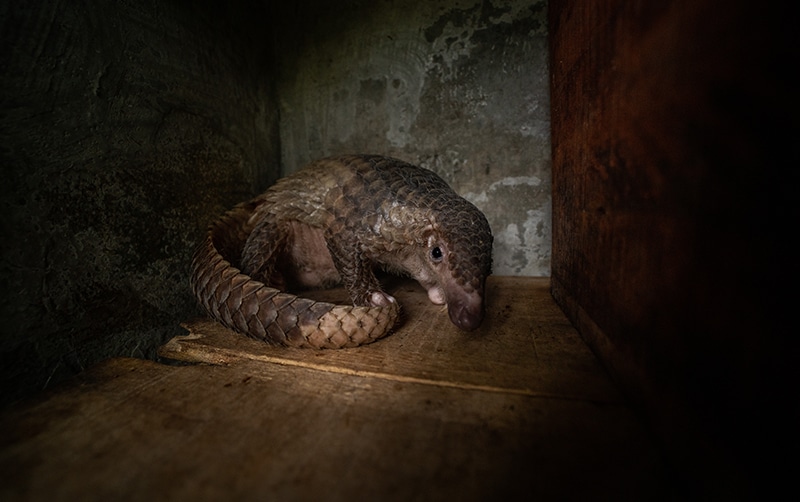
Pangolins are the most highly trafficked mammal in the world, targeted by the wildlife trade for their meat and scales. Image: © Chris Scarffe
Alongside habitat loss and disease, one of the biggest threats to biodiversity tackled by conservationists is the global wildlife trade. As a response to the COVID-19 pandemic and its likely transmission to humans from pangolins (the most trafficked mammal in the world) in a wet market, China recently announced a ban on consuming wild animals (though there are issues with enforcement and wildlife use for traditional medicine was not mentioned). Many conservation organisations are calling for even greater, global action, with conservation and animal welfare groups asking leaders of the World Health Organisation (WHO) to take action “to permanently end the commercial trade and sale in markets of wild terrestrial animals, for consumption, worldwide.”
However, other conservationists have urged caution. Even though it is acknowledged that the wildlife trade needs a global review, they say it is far too complex for a ban to fix, and a global trade ban in response to COVID-19 could have devastating impacts on communities relying on wildlife markets for affordable food or dependent on wildlife trade for their livelihoods. Some of the alternative responses suggested are targeting strategies to reduce disease transmission in areas with the highest risk; building partnerships between international agencies for environment (the United National Environment Programme, UNEP, and the International Union for Conservation of Nature, IUCN), health (WHO, World Organisation for Animal Health, OIE) and food (Food and Agriculture Organisation of the United Nations, FAO and the World Trade Organisation, WTO); and raise intergovernmental awareness of the risks to human health associated with biodiversity loss.
In a nuanced op-ed for The Independent, the acting executive secretary of the UN Convention on Biological Diversity (CBD) Elizabeth Maruma Mrema said that a ban may also “inadvertently exacerbate risk, by driving an underground market for the illegal trade of species used as food and medicine.” She advocates the “One Health” approach, where the intimate relationships between the health of wildlife, livestock, the environment and people is acknowledged and compensated for in decision making.
One Health

‘One Health’ is an approach to designing and implementing programmes, policies, legislation and research in which multiple sectors communicate and work together to achieve better public health outcomes. Image © Shutterstock
The interconnected nature of human health with that of all other life with which we share our planet is a consistent theme which has arisen during the research for this series on health and biodiversity, which has only scratched the surface. Creating barriers which separate sectors for environment, health and food makes these fundamental issues compete with each other for funding and action when, in reality, they should be developed together. A similar barrier is created just by saying the word ‘nature’- implying that we exist outside the natural world, when actually we are greatly affected by it, as it is by us. Maybe one world-changing outcome we can hope for when we emerge from the current crisis binding our global community together is an understanding that human health, wildlife health and planetary health, are in fact one health.
Our next Health and Biodiversity piece moves away from wild diseases to wild medicines – focussing on some of the evolutionary innovations which have led to medicinal breakthroughs. Have a read >>




